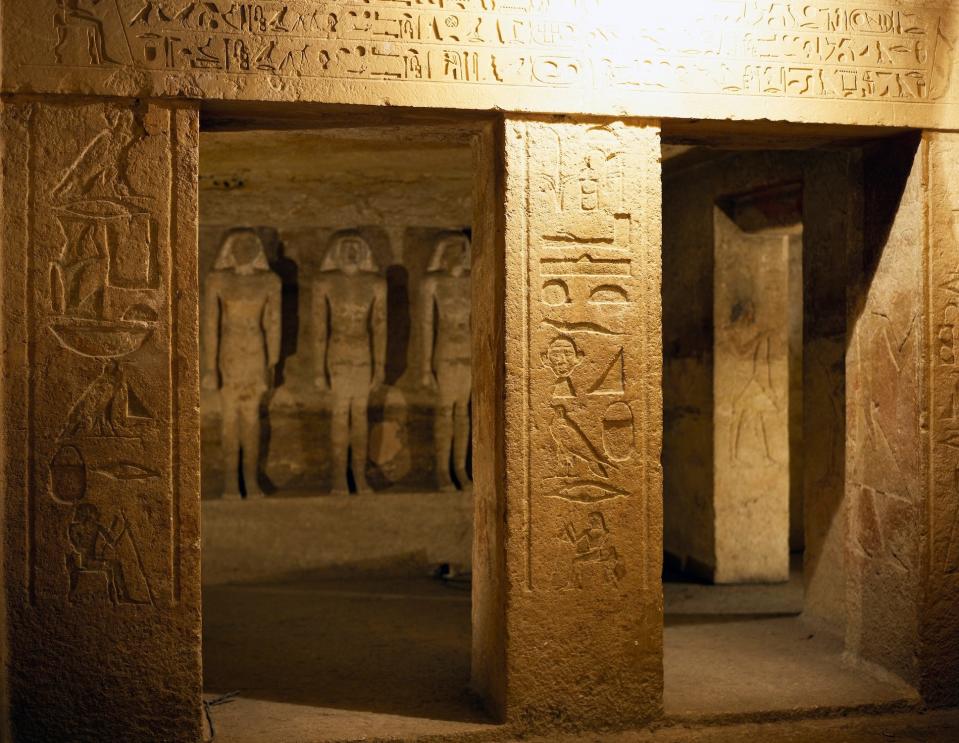-
Archaeologists have discovered secret structures in Giza, Egypt, using high-tech ground-penetrating methods.
-
The methods revealed an L-shaped structure and a larger, deeper anomaly hidden beneath the bare sand.
-
The findings may explain why a large portion of the densely packed Western Cemetery is empty.
Egypt It holds many secrets from its ancient past, and archaeologists may have discovered a new one hidden beneath the sands of the Western Cemetery in Giza.
The Western Cemetery contains hundreds of rectangular tombs called mastabas that line the base of the The Great Pyramid of Giza. These mastabas belong to elite citizens and relatives of the ancient Egyptian king Khufu, who ruled around 4,500 years ago.
However, in stark contrast to the many rows of tombs, an area of the cemetery it is empty, without structures. Below the sand, it’s a different story, archaeologists recently discovered.
What appears to be a flat, sandy surface can hide long forgotten structures built thousands of years ago. Just a few meters below the surface lies what appears to be an L-shaped structure. Even deeper, there is another, larger structure connected to the first.
The corners of the L-shaped structure are “too sharp” to occur naturally, researcher Motoyuki Sato, who helped find the anomaly, told Live Science.
This suggests it was built by humans and may explain why such a large portion of the crowded necropolis remains empty above the sand, researchers reported in a paper recently published in the peer-reviewed journal. Archaeological Prospecting.
Both characteristics may be remnants of a ancient tomb, according to the researchers. However, the discovery still leaves many questions unanswered.
High-tech archeology uses radar and other tools to find buried secrets

At the early days of archeology, it took years of careful excavation to discover the shape and size of a structure. Now, the latest technologies can help scientists map previously unknown buildings without removing so much as a shovelful of dirt.
That’s how researchers from Higashi Nippon International University, Tohoku University and Egypt’s National Research Institute of Astronomy and Geophysics discovered this latest hidden piece of history.
Between 2021 and 2023, the team studied the site using not one, but two high-tech methods: ground penetrating radar (GPR) and electrical resistivity tomography (ERT). GPR uses electromagnetic waves to map shallow underground features at high resolution. For deeper structures, ERT can locate walls, pits, and similar anomalies, but without as much detail.
Combining GPR, ERT and satellite data, researchers discovered an L-shaped structure measuring approximately 32 by 50 feet, buried 1.6 to 6.5 feet beneath the sand. They also found evidence of a 1,000-square-foot structure, about 11.5 to 33 feet below ground, deeper than the L-shaped anomaly.
The next step is excavation


At some point, the shallower L-shaped structure was filled with sand, which could be a clue to its purpose. It may have served as a kind of passage to a lower tomb, according to the researchers. Ancient Egyptians often filled these wells to keep out the living.
While GPR and ERT can offer a more complete picture of underground archaeological finds, these techniques can only take archaeologists so far. The researchers noted that data from the two methods did not match precisely and that the techniques can sometimes make anomalies appear larger than they really are.
Other mysteries also remain. They don’t know what, if anything, exists in the deeper structure. It may be full of sand or completely empty.
To answer some of these questions, archaeologists needed to start digging, literally. They are currently excavating the site, Live Science reported.
Read the original article at Business Insider






































